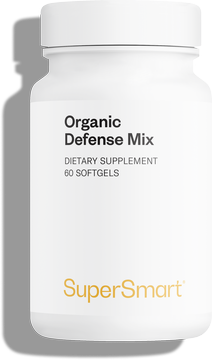The wonders of Ginkgo Biloba - its benefits, dosage and the legends surrounding it
Anyone interested in trees and phytotherapy cannot help but be captivated by the ginkgo biloba, also known as the maidenhair tree. It’s a curiosity of Nature that everyone should see at least once in their life...
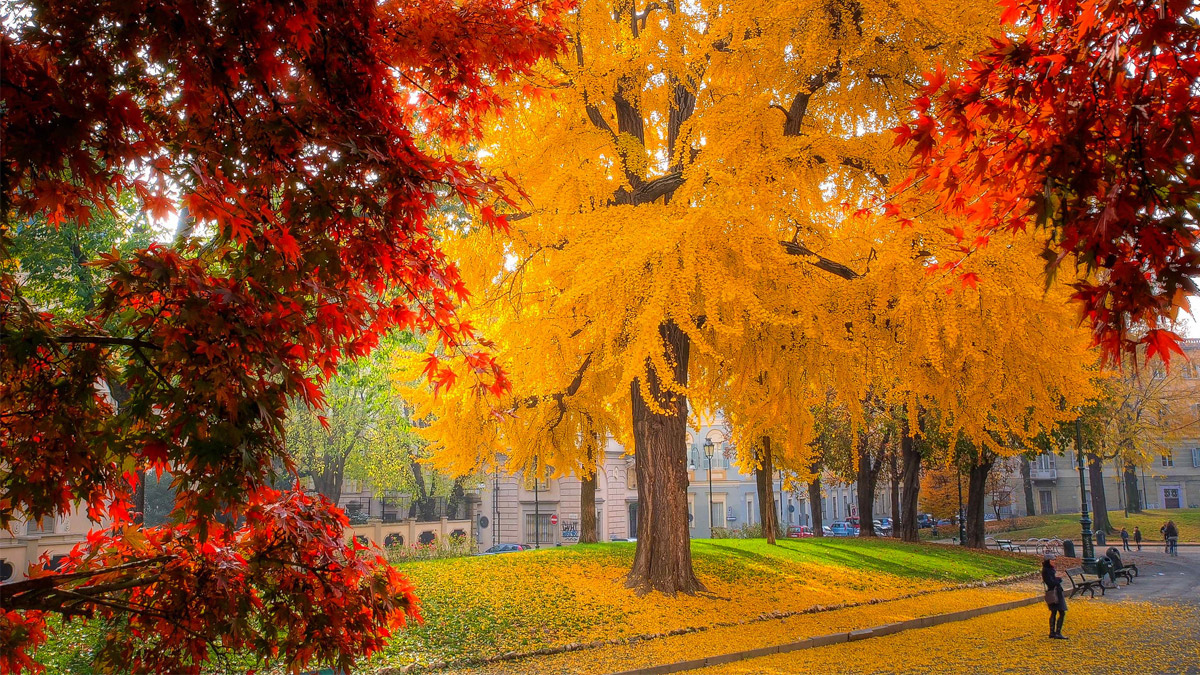
If you had a time machine and travelled back 150 million years to the age of the dinosaurs, you’d be propelled into a very different world where almost all the living species would seem completely unfamiliar and fantastical. Among the few exceptions, however, would be the mysterious Ginkgo biloba, a tree that today lines the streets of Tokyo and New York, and which, it seems, was at the forefront in witnessing the extinction of the dinosaurs.
This happened 65 million years ago. To put that into context, humans have existed for just 300,000 years. So how on earth has this elder of the tree world managed to survive throughout the ages and withstand all the biological and geological phenomena the planet has thrown at it? The secret probably lies in its brilliant cellular composition. Scientists have discovered that it contains an amazing blend of micronutrients enabling it to resist diseases, parasites, pollutants, heat, insects and even aging: the ginkgo biloba can live for up to 3000 years.
A living fossil that defies time
When the first Western botanists encountered it in the 17th century, they were somewhat puzzled. Was it coniferous or deciduous? This strange tree did not belong to any existing plant family and therefore required the creation of a new plant group even though it was the only member. When they compared it to fossils, the plant scientists soon realised that Ginkgo biloba was in fact the last surviving member of a common group of trees that lived around 150 million years ago. These unusual trees died out in North America seven million years ago, and in Europe three million years ago, probably when the mammals and reptiles that helped disperse its seeds became extinct. But against all odds, and without anyone knowing, one species of the group survived in China (1). Ginkgo biloba is the only surviving member of the ginkgophyte family, probably the oldest group of trees in the world.
The fact that it’s still around today is nothing short of a miracle given that the huge mammals that previously ensured the dispersal of its seeds have all disappeared. The ginkgo biloba had developed a clever way of attracting these animals by making its seeds very strong-smelling – though we need to recognize that one species’ sense of smell is very different from another’s. For humans, these seeds give off a truly horrible odour which would deter anyone from trying them. Even if you’re really keen to taste them, you might find it difficult: the animal-attracting smell is only present in the female seeds, and it’s normally only the male variety which is chosen for planting in urban settings. This means those ‘in-the-know’ can comfortably pick the seeds which taste a little like pistachios. (2).
In any event, even though there are still birds and small mammals around today that are probably spreading its seeds, the Gingko biloba appears to have survived through the ages thanks to the acts of humans and perhaps those of Buddhist monks in particular, who planted them around their monasteries. Nowadays, its gradual re-colonisation across the word remains fragile but it’s proof, once again, of the tree’s incredible resilience to the passing of time, unlike the majority of species …
Particular features of the ‘maidenhair’ tree
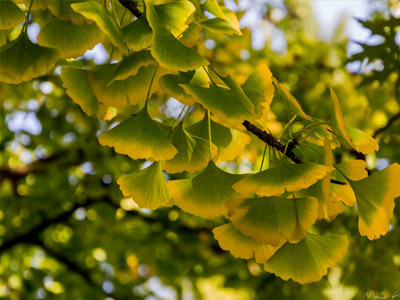 Anyone interested in trees and phytotherapy cannot help but be captivated by the ginkgo biloba, also known as the maidenhair tree. It’s a curiosity of Nature that everyone should see at least once in their life, if only for its unusually-shaped leaves and the yellow-gold colour they turn in autumn. But the most fascinating aspect is that come winter, it sheds its acid yellow leaves all at once, forming a magical golden carpet. Thousands of people visit the Guanyin Gu Buddhist temple each year to marvel at this spectacle.
Anyone interested in trees and phytotherapy cannot help but be captivated by the ginkgo biloba, also known as the maidenhair tree. It’s a curiosity of Nature that everyone should see at least once in their life, if only for its unusually-shaped leaves and the yellow-gold colour they turn in autumn. But the most fascinating aspect is that come winter, it sheds its acid yellow leaves all at once, forming a magical golden carpet. Thousands of people visit the Guanyin Gu Buddhist temple each year to marvel at this spectacle.
The way it reproduces is also unique. In fact, the ginkgo biloba does not produce seeds as such, but ovules. Ginkgos are pre-spermatophytes: in evolution, they predated both seeds and fruits. In this, they are similar to humans, especially as the female of the species is only able to produce ovules when it reaches ‘adolescence’, which in the case of ginkgos is around 80 years. The Japanese have thus named it the ‘grandfather and grandson tree’ because anyone who plants a ginkgo will not be around to pick the fertilised ovules themselves: they’ll have to leave that to their grandsons …. However, the most remarkable thing about this tree is its astonishing defense systems, thought to be impenetrable. Quite simply, it has no known diseases or parasites. Neither does it fall victim to viruses, bacteria, insects, pollution, the cold, dry periods or even the most devastating fires. Here, its secret lies in the fact that it covers its trunk with a special fireproof sap. In this way, a Japanese temple surrounded by ginkgo hedges miraculously survived the Great Tokyo Fire of 1923. This astonishing event subsequently led to the authorities choosing the ginkgo leaf as the town’s emblem.
But it was probably on 6th August 1945, that the ginkgo biloba displayed its greatest show of resistance. The dropping of a nuclear bomb on Hiroshima by the Americans resulted in more than 140,000 deaths and the obliteration of very many forms of plant life within a three-kilometer radius of the impact. But less than a year later, in spring 1946, scientists were astonished to find a ginkgo biloba growing just one kilometer from the impact, right in the middle of a still-smoking field of charred ruins. Now adopted as a symbol of renewal, this ginkgo has since been incorporated into the construction of a temple dedicated to life. In all, there were four surviving examples of the Ginkgo biloba species, highlighting its amazing resilience in the face of mutagens such as radiation.
Taken collectively, these properties make ginkgo a near-immortal tree: the oldest specimens are 4000 years old and 40 meters tall... It’s also said that the founder of Taoism, Lao Tseu, planted a ginkgo 2500 years ago which may still be alive today.
The proven benefits of ginkgo and those yet to be explored
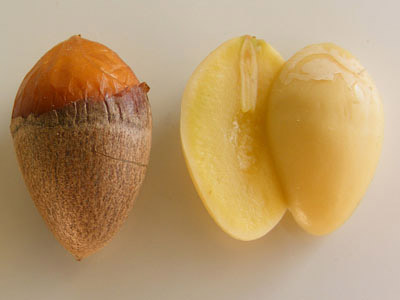 Once researchers realised they were dealing with an extraordinary species, they immediately started to think about its potential for human health. And they were right to do so. In fact, Asian populations were well ahead of them - the tree’s leaves and in particular, its ovules, have been used for centuries as a traditional treatment for asthma and circulation problems.
Once researchers realised they were dealing with an extraordinary species, they immediately started to think about its potential for human health. And they were right to do so. In fact, Asian populations were well ahead of them - the tree’s leaves and in particular, its ovules, have been used for centuries as a traditional treatment for asthma and circulation problems.
In just a few years, scientific knowledge has confirmed the experiences of these forebears. More than 200 studies on the biological effects of ginkgo have identified terpenes (ginkgolides A, B and C, bilobalides) and flavonoids (kaempferol, quercetol, luteolin, etc.) as the molecules responsible for its effects (3). But its action seems above all to be the result of a complex synergy between all these compounds. Synergy is what happens when the benefits of several compounds taken simultaneously are greater than the effects of those same compounds taken separately. In other words, in this case, 1+1 does not equal 2, but 3 or 4. The example of vitamin C and iron is often used to illustrate this principle as vitamin C improves the body’s absorption of iron as well as conferring its normal effects. Taking vitamin C and iron at the same time will therefore have a greater effect than taking vitamin C in the morning and iron in the afternoon.
Ginkgo-based supplements and medicines are currently used to treat problems related to decline in mental performance and to improve cerebral and peripheral perfusion. In China, the therapeutic indications listed in the Pharmacopoeia of the People's Republic of China (published in 2010) also include stroke, angina, cardiovascular problems, dysphasia and myocardial infarction.
Ginkgo biloba and circulation problems
Most people who take ginkgo biloba do so to improve circulation problems, of which there are many types:
- Microcirculatory peripheral vascular problems
- Venous and lymphatic insufficiency
- Vascular-related sight and smell problems
- Raynaud’s phenomenon
- Arteriopathy of the lower limbs
- Recurrent cramps (primarily in the hips, thighs, buttocks or calves)
- Heavy legs
- Frequent numbness or tingling
- Hypertension (raised blood pressure)
- Dizziness
Ginkgo contains many compounds beneficial to circulation but the most important are undoubtedly flavonoids. These antioxidants are recognized as acting at every level of the circulatory system (4-5). They relax capillary resistance, reduce permeability and increase cerebral perfusion by activating several mechanisms :
- They reduce inflammation by inhibiting platelet-activating factor (6-7), a molecule responsible for blood viscosity and the inflammatory state of blood vessels (8-9).
- They act as bullet-proof vests against free radicals (10-12), the harmful molecules responsible for the blood vessel damage seen in atherosclerosis.
- They improve metabolism of lipids and glucose. Hyperglycaemia is a key factor in inflammation of the blood vessel walls and their degradation (13) (high glucose levels stimulate secretion of IL6, a pro-inflammatory factor). Flavonoids help reduce this process by stimulating pancreatic hormone secretion and increasing pancreatic hormone sensitivity (14).
- They cause vasodilation and improve blood flow (15-16).
Ginkgo biloba: what are its effects on aging?
Mitochondria are found in almost all the body’s cells. These little powerhouses complete the conversion of our food into energy for use by the body. Cells which require a lot of energy, such as neurons or muscle cells, thus contain a large number of mitochondria.
Complex chemical reactions take place in the mitochondria and sometimes elements that are dangerous to cells escape. This is perfectly normal and the body is equipped with an antioxidant defense system to protect it. At least, up to a point. When antioxidant defenses diminish (as we age, for example), or when the generation of oxidative molecules is exacerbated by external factors (such as pollution, smoking, UV rays etc), the scales are tipped and irreparable cell damage occurs (17). Cells that contain a lot of mitochondria are therefore at increased risk as are the mitochondria themselves, which is a real problem given that they handle highly-sensitive compounds. Repeated attacks could potentially cause significant structural damage and thus lead to an increase in the escape of dangerous elements which in turn, could have a further destabilising effect. If this vicious circle were to continue unabated, the damage would become colossal, affecting the whole body. The good news is that, rather than allow this scenario to materialise, cells commit suicide.
This is what appears to happen in cognitive decline and diseases such as Alzheimer’s (18). It is the changes in mitochondrial function which seem to cause permanent damage to cells (and the proteins they synthesise) and trigger their suicide. The key problem is that brain cells are unable to divide and every cell that disappears is not replaced (19) … Research has shown that ginkgo biloba has a positive effect on this disease mechanism as a result of its bilobalides which reduce the ‘leakages’ from mitochondria and protect their barriers against oxidative elements (20-23). Over the long term, such an effect could make a huge difference, potentially increasing energy production (fewer ‘leakages’) (24-25), reducing the number of brain and muscle cells committing suicide, and preserving neuronal circuits, thus maintaining memory and cognitive ability (26) …
Ginkgo’s benefits for memory
Ginkgo biloba extract is without doubt the substance that has undergone the most clinical testing in terms of cognitive health. In fact, its effect on mitochondrial function is not the only reason it’s popular for improving cognitive function; there are at least three other mechanisms:
- It may increase serotonin in synapses thus boosting activity in the hippocampus, a memory-integrating structure.
- It may influence the expression of genes that control the growth of synapses in brain cells (27).
- It may reduce activation of NF-kB, a pro-inflammatory molecule involved in brain cell death.
Recent years have seen the publication of dozens of clinical trials highlighting the effects of ginkgo on the brain. Two meta-analyzes concluded that ginkgo was much more effective than placebo (28-29). In 2009, the Institute for Quality and Efficiency in Healthcare, a German independent scientific institute (IQWiG), confirmed ginkgo’s benefits, particularly for improving cognitive function and daily life (30).
The maidenhair tree may thus be beneficial for those at risk of dementia as well for improving various cognitive problems:
- Difficulties concentrating
- Changes to memory
- Confusion
- Mood problems
- Dizziness
- Headaches
- Problems with motivation
- Poor cognitive efficacy
Are there any anticipated side-effects?
It’s often said that if something seems too good to be true, it probably is. But ginkgo biloba is a rare exception: various meta-analyzes have shown that ginkgo is only associated with rare, and generally-acceptable side-effects.
These are primarily due to its vasodilatory effect which may cause mild headaches when you first begin taking the supplements. To avoid this, it’s best to start small, increasing the dose gradually in line with your needs. As it’s a plant that tends to thin the blood, it should not, however, be taken by hemophiliacs and pregnant women.
What’s the right dose?
Most of the clinical trials used study periods of between 22 and 26 weeks and daily doses ranging from 120mg to 240mg of dry extract (31). This is also what’s recommended by the German Commission E, the WHO and IQWiG. Given that it may take a while for ginkgo’s benefits to become fully apparent, it will probably be at least two or three months before you appreciate its effects.
These effects will be greater if you choose extracts that contain at least 20% flavonoids and 6% terpenes. There are too many mediocre and suspiciously-cheap ginkgo biloba extracts around. The saying mentioned above is highly relevant here: remember that ginkgo biloba is a rare tree and that its antioxidant compounds are particularly fragile! The quality of the final product depends on each stage of production, from the cultivation of the trees right up to the final capsule. A supplement such as Ginkgo Biloba 60 mg meets all the necessary criteria and was specially developed using elements of scientific research.
If you’re considering ginkgo biloba for its cognitive effects, you’ll almost certainly be interested in Smart Pills too, an unrivalled nootropic formulation that combines ginkgo biloba with natural products aimed at improving mental efficacy. It offers the opportunity to experience ‘flow’, a state of high mental clarity, while maintaining cognitive ability over the long term …
Particular individuals who should re-read this article
People who are at higher risk of cognitive decline and circulation problems should be especially interested in the benefits of ginkgo biloba. They include:
- Diabetics.
- Those who are overweight.
- Smokers.
- Those with hypertension.
- Those with a family history of peripheral vascular disease.
- Those who are physically inactive.
- Those with high cholesterol levels.
- The over-50s, especially women.
- Anyone with a parent, brother or sister who suffers from Alzheimer’s disease.
- Those of Hispanic or African-American origin (who are up to twice as likely to suffer from Alzheimer’s disease (32).
Quelques mots pour finir sur le mot « Ginkgo » : sachez qu’il se prononce en français « JIN-KO » avec le son « IN » du mot « VIN » et qu’il faut donc éviter la prononciation à l’anglaise qu’on entend trop souvent « DJINE-KO ». Ne dit-on pas qu’on doit le plus grand respect aux anciens ?
References
- Gong W, Chen C, Dobes C, et al. Phylogeography of a living fossil: pleistocene glaciations forced Ginkgo biloba L. (Ginkgoaceae) into two refuge areas in China with limited subsequent postglacial expansion. Mol Phylogenet Evol. 2008;48(3):1094–105.
- Cohn R, May 1 2003, The Life Story of The Oldest Tree on Earth, Yale Environment 360, Published at the Yale School of Forestry & Environmental Studies
- Singh B, Kaur P, Gopichand, et al. Biology and chemistry of Ginkgo biloba. Fitoterapia. 2008;79(6):401–18.
- Hertog MG, Feskens EJ, Kromhout D. Antioxidant flavonols and coronary heart disease risk. Lancet. 1997;349(9053):699.
- Yochum L, Kushi LH, Meyer K, et al. Dietary flavonoid intake and risk of cardiovascular disease in postmenopausal women. Am J Epidemiol. 1999;149(10):943–9.
- Touvay C, Vilain B, Taylor JE, et al. Proof of the involvement of platelet activating factor (paf-acether) in pulmonary complex immune systems using a specific paf-acether receptor antagonist: BN 52021. Prog Lipid Res 1986; 25(1-4): 277-88
- Tzeng SH, Ko WC, Ko FN, et al. Inhibition of platelet aggregation by some flavonoids. Thromb Res 1991; 64(1): 91-100.
- Belayev L, Khoutorova L, Atkins K, et al. LAU-0901, a novel platelet-activating factor antagonist, is highly neuroprotective in cerebral ischemia. Exp Neurol. 2008;214(2):253–8.
- Smith PF, Maclennan K, Darlington CL. The neuroprotective properties of the Ginkgo biloba leaf: a review of the possible relationship to platelet-activating factor (PAF). J Ethnopharmacol. 1996;50(3):131–9.
- EGb 761: Ginkgo biloba extract, Ginkor. Drugs R D 2003; 4(3): 188-93.
- Ou HC, Lee WJ, Lee IT, et al. Ginkgo biloba extract attenuates oxLDL-induced oxidative functional damages in endothelial cells. J Appl Physiol 2009; 106(5): 1674-85.
- Pierre SV, Lesnik P, Moreau M, et al. The standardized Ginkgo biloba extract Egb-761 protects vascular endothelium exposed to oxidized low density lipoproteins. Cell Mol Biol 2008; 54(Suppl 1): 1032-42.
- Fiorentino TV, Prioletta A, Zuo P, et al. Hyperglycemia-induced oxidative stress and its role in diabetes mellitus related cardiovascular diseases. Curr Pharm Des 2013; 19(32): 5695-703.
- Chen JS, Chen YH, Huang PH, et al. Ginkgo biloba extract reduces high-glucose-induced endothelial adhesion by inhibiting the redoxdependent interleukin-6 pathways. Cardiovasc Diabetol 2012; 11: 49.
- Tsai TN, Lin WS, Wu CH, et al. Activation of Kruppel-like factor 2 with Ginkgo biloba extract induces eNOS expression and increases no production in cultured human umbilical endothelial cells. Acta Cardiol Sin 2014; 30(3): 215-22.
- Kubota Y, Tanaka N, Umegaki K, et al. Ginkgo biloba extractinduced relaxation of rat aorta is associated with increase in endothelial intracellular calcium level. Life Sci 2001; 69(20): 2327-36.
- Christen Y. Oxidative stress and Alzheimer disease. Am J Clin Nutr. 2000;71(2):621S–9S.
- Mancuso M, Coppede` F, Murri L, et al. Mitochondrial cascade hypothesis of Alzheimer’s disease: myth or reality? Antioxid Redox Signal. 2007;9(10):1631–46.
- Reddy PH. Mitochondrial dysfunction in aging and Alzheimer’s disease: strategies to protect neurons. Antioxid Redox Signal. 2007;9(10):1647–58
- Abdel-Kader R, Hauptmann S, Keil U, et al. Stabilization of mitochondrial function by Ginkgo biloba extract (EGb 761). Pharmacol Res. 2007;56(6):493–502.
- Leuner K, Hauptmann S, Abdel-Kader R, et al. Mitochondrial dysfunction: the first domino in brain aging and Alzheimer’s disease? Antioxid Redox Signal. 2007;9(10):1659–75.
- Eckert A, Keil U, Kressmann S, et al. Effects of EGb 761 Ginkgo biloba extract on mitochondrial function and oxidative stress. Pharmacopsychiatry. 2003;36(Suppl 1):S15–23.
- Eckert A, Keil U, Scherping I, et al. Stabilization of mitochondrial membrane potential and improvement of neuronal Pharmacokinetics of Ginkgo biloba Extracts energy metabolism by Ginkgo biloba extract EGb 761. Ann N Y Acad Sci. 2005;1056:474–85.
- Janssens D, Michiels C, Delaive E, et al. Protection of hypoxiainduced ATP decrease in endothelial cells by Ginkgo biloba extract and bilobalide. Biochem Pharmacol. 1995;50(7):991–9.
- Janssens D, Remacle J, Drieu K, et al. Protection of mitochondrial respiration activity by bilobalide. Biochem Pharmacol. 1999;58(1):109–19.
- Tchantchou F, Lacor PN, Cao Z, et al. Stimulation of neurogenesis and synaptogenesis by bilobalide and quercetin via common final pathway in hippocampal neurons. J Alzheimers Dis. 2009;18(4):787–98.
- Rimbach G, Wolffram S, Watanabe C, et al. Effect of Ginkgo biloba (EGb 761) on differential gene expression. Pharmacopsychiatry. 2003;36(Suppl 1):S95–9.
- Ahlemeyer B, Krieglstein J. Neuroprotective effects of Ginkgo biloba extract. Cell Mol Life Sci. 2003;60(9):1779–92.
- DeFeudis FV. Bilobalide and neuroprotection. Pharmacol Res. 2002;46(6):565–8
- IQWIG. Abschlussbericht: Ginkgohaltige Pra¨parate bei Alzheimer Demenz; 2008.
- DeFeudis FV, Drieu K. Ginkgo biloba extract (EGb 761) and CNS functions: basic studies and clinical applications. Curr Drug Targets. 2000;1(1):25–58.
- Alzheimer's Association Report. 2010 Alzheimer'snext term disease facts and figures. Alzheimer's and Dementia. Volume 6, Issue 2, March 2010, Pages 158-194.
Crédits Images :
David Scarboro https://www.flickr.com/photos/vicjuan/15856231060/ https://www.flickr.com/photos/diegojack/15713761809/ https://www.flickr.com/photos/uniform-studio/4898917349/
Martha W McQuade Shigemi.J - Iwate , Japan https://creativecommons.org/licenses/by-nc-nd/2.0/
Tapis d’or : https://www.flickr.com/photos/fui/306253983/
Feuille verte : https://www.flickr.com/photos/bwjones/42844285181/
Keywords
5 Days
Great customer service - responsive …
I ordered from them and my item was unavailable for sometime. I was super happy when they reactivated my order and shipped my item which arrived very quickly. Great customer service.
Ruth Rueter
6 Days
Super fast shipping
Super fast shipping
Donald Borling
9 Days
Reputable companysearch and the number of…
The research and the number of selection of products.
NAKHJAVAN Shervin
22 Days
The Anti Aromatase is a great product
The Anti Aromatase is a great product. You just need to have constant inventory. Recently this product has been out of stock.
GEORGE Verne
24 Days
Great help on chat
Great help on chat. Knowledgeable and friendly.
Jason Argos
27 Days
Customer service was fast and friendly.
Customer service helped to stop the transaction process of the subscription. I appreciated that.
Greenie
27 Days
I order here due to the high quality of…
I order here due to the high quality of the products and the quick delivery of items - thank you
Barbara J
29 Days
SuperSmart's Eye Pressure supplements: highly recommended!
I purchase SuperSmart's Eye Pressure supplements regularly for over 5 years, and gotta say they are truly a wonderful product for my Glaucoma. Highly recommended if you have eye pain from your Glaucoma.
D. Martinez
33 Days
Quick service
Quick service
MONELL
34 Days
Speedy service.
Speedy service.
ROSENTHAL Marvin
38 Days
Clear website- Efficient
Clear website. Excellent search engine and fast delivery!
Mohamad Hussein
40 Days
They have great products.
They have great products.
Vickie
40 Days
Great Shipping Time!
You Have A Great Shipping Time! Praise The Lord!
DMHoge
42 Days
Doctor Recommended!
Good pricing, very good availability, doctor recommended (couldn't find what I needed anywhere else), and it took only a week to arrive (which I can't complain about).
Al
43 Days
Great product and fast shipping
Great product and fast shipping
Marie

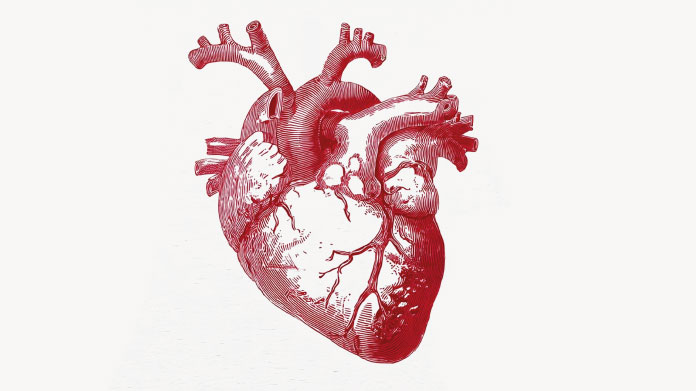
.jpg)


